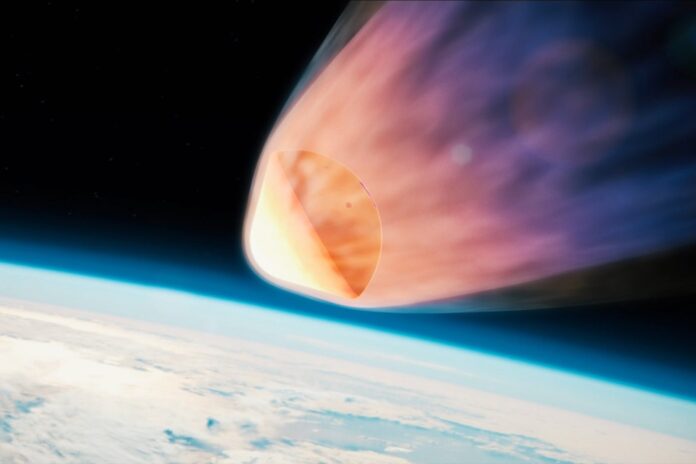[ad_1]
By 1972, the race to put boots on the Moon was officially over, but the race to explore the wider solar system was in full swing. The Soviet space program built several probes designed to survive in and study the environment of Venus. That’s no easy feat, the average temperature on Venus is 867 degrees Fahrenheit with 75 times the atmospheric pressure of Earth.
Some of those early space probes succeeded in their missions, capturing the first measurements and images from the Venusian surface. Kosmos 482 was not one of them. Launched in 1972, Kosmos 482 was intended to land on the surface of Venus, but an engine malfunction left it stranded in Earth orbit. Now, more than 50 years later, it’s expected to come back down to Earth sometime between May 7 and 13.
“There’s a not-trivial chance that it could hit somewhere where it damages property, and there’s a small chance — but it’s like one in thousands — that it could hurt someone,” astronomer Jonathan McDowell told NPR’s All Things Considered.
Soviet-era Venus probe Kosmos 482 set to burn up in the atmosphere sometime this week
Launched aboard a Molniya-M (8K78M) four-stage launch vehicle, essentially a Soyuz rocket with an additional fourth stage, Kosmos 482 was launched just four days after the Soviet Venera 8 spacecraft, which successfully landed on Venus and survived on its surface for nearly an hour.
Kosmos 482 might have done the same thing, but instead, it became a wild robot (not quite Roz, of The Wild Robot fame) whipping around the planet in a decaying orbit. Like other Soviet probes of the time, the mission started by launching the probe and parking it in low-Earth orbit. From there, it should have made a 4-minute engine burn, pushing it into a Venus transfer trajectory. Instead, the engine burned for only 2 minutes, and the mission essentially ended there.
The spacecraft separated into four pieces, two of which fell back to Earth shortly thereafter. The other two, believed to be the landing probe (a 495-kilogram insulated spherical pressure vessel) and the upper stage engine, were pushed into a higher elliptical orbit with an altitude of 206 km x 9,800 km.
Starting in 1962, the Soviets gave the designation Kosmos to any spacecraft left in Earth orbit, even if that wasn’t their intended destination. Whatever designation the spacecraft might have had was replaced and it was named Kosmos 482 instead.
“I am moderately confident, but not 100 percent confident, that object 6073 is the Kosmos-482 entry capsule. If it is, its heat shield means that the half-ton, one-meter-diameter sphere might well survive Earth atmosphere entry and hit the ground. In which case I expect it’ll have the usual one-in-several-thousand chance of hitting someone,” McDowell wrote in a blog post.
More than 50 years after launch, Kosmos 482 could come down anywhere between 52 degrees north and 52 degrees south latitude, pretty much anywhere around the world. While space junk often burns up in the atmosphere upon reentry, Kosmos 482 was designed to endure the intense heat and pressure of Venus and is expected to survive. While that might sound scary, the odds are good it will crash down without incident.
While we’re waiting for an aging spacecraft to come back home, catch The Wild Robot, streaming now on Peacock.
[ad_2]
Source link








